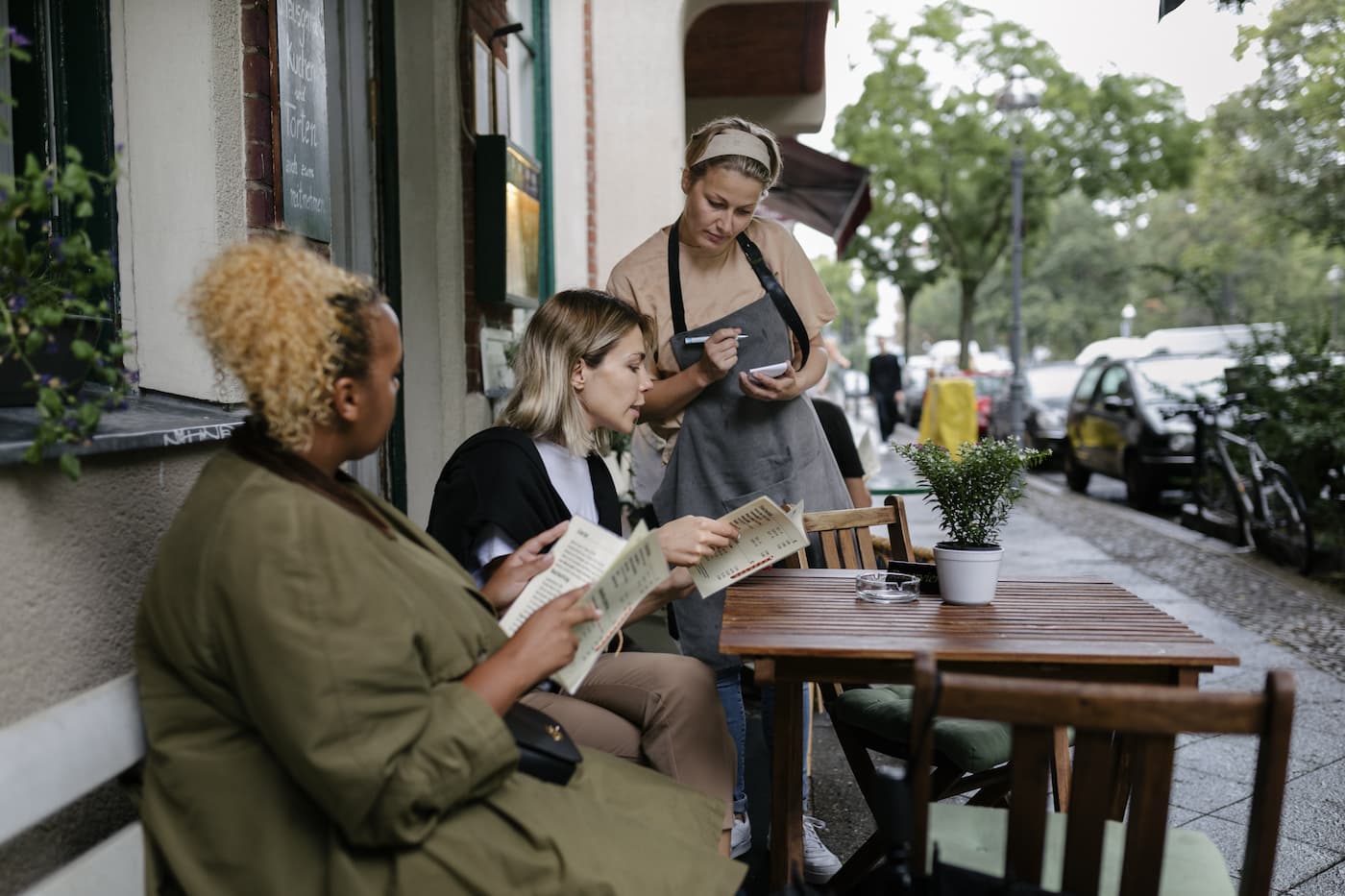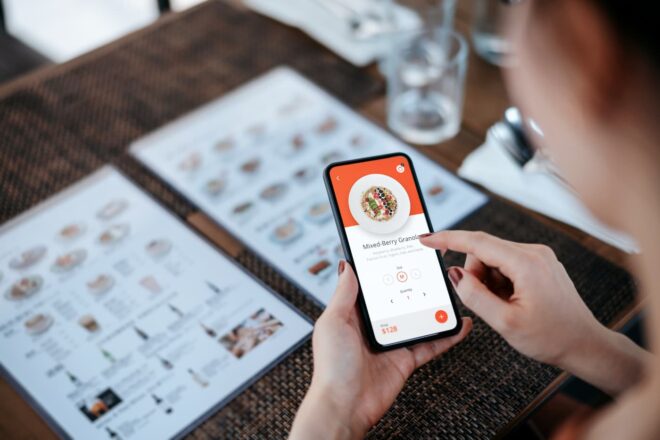How to create a restaurant menu
Editorial Team
7 min read
Restaurant menu design plays a crucial role in underscoring your restaurant’s theme and branding. And, it’s also one of the smartest ways to increase restaurant profits. The items you include on your menu, how you price them, and even where on the menu you place them can all influence what guests order and how happy they are at the end of their meals.
These restaurant menu design tips can help you learn how to create a restaurant menu that resonates with diners and increases your profit margins. Keeping your menu lean can be one way to take pressure off the kitchen and hone in on what your concept excels at making. A smaller, well-executed menu can be more successful than a huge mediocre one. Delivering well-prepared food helps set up your entire operation for success, from the line cook to the server, and ultimately your bottom line.
Stay true to the restaurant’s concept
Your restaurant concept is the overarching theme that guides everything from your décor to your level of service to how guests perceive their in-restaurant experience. It also helps determine your menu, as everything you plate for guests should be in line with that concept.
Other things to consider include your intended dining style (e.g., fast casual vs. fine dining) and your targeted price point.
Also, consider looking at current local menus and finding opportunities to fill gaps in the marketplace with items not available from other establishments. Or, find a way to put a unique twist on something.
Outline each section of the menu
Deciding what should be included in a menu is ultimately up to you. Here’s a common menu configuration to help you brainstorm:
- Appetizers/Starters
- Soups & Salads
- Lunch Entrees
- Dinner Entrees
- Desserts
- Beverages
Find other restaurant menu examples to see how competitors break down their menus. Some separate their entrée sections by type of food: sandwiches, wraps, full entrees, etc. Others prefer to organize their menu by protein. A restaurant focused on Italian American classics, for example, might embrace a restaurant menu design that looks like this:
- Appetizers & Antipasto
- Sandwiches & Salads
- Pizza
- Pasta
- Chicken
- Steak
- Seafood
- Dessert
Or, like this:
- Antipasti
- Primi
- Secondi
- Contorni
- Dolci
If your concept relies heavily on a certain category, such as wine or handcrafted cocktails, creating a separate menu could help draw guest attention to those high-margin items and boost sales. Consider developing a set of food items that naturally lend themselves to this part of the experience and encourages people to order another round. For example, offering salty and spicy foods (e.g. Buffalo wings) has been shown to keep guests ordering more beer and cocktails, which helps increase alcohol sales.
As much as your menu exists to help customers understand their options, it’s also useful from an operational standpoint. A well-organized menu can help manage inventory, ensure proper cross-utilization of ingredients, and report on food sales.
READ: How to make a high-performing kids’ menu for your restaurant
Consider food allergies & dietary restrictions
Approximately 32 million Americans have some type of food allergy – that’s about one in 10 adults and one in 13 children. Make it easy for those with allergies or dietary restrictions to order by clearly denoting dishes that contain common allergens and those that are suitable for specific dietary needs.
Use icons or plain wording to identify menu items that are:
- Gluten-free
- Plant-based
- Vegetarian
- Vegan
- Kosher
- Halal
Depending on your target demographic, you may also want to identify recipes that are low calorie, high protein, low sodium, or low sugar/sugar-free. If a dish can be tweaked to suit an allergy or dietary request – such as removing nuts or animal protein to make the item allergy-free or vegetarian – indicate possible substitutions as well.
For fine dining or menus that change often, highlighting allergens in print may not make sense, but you can still address the needs of those with sensitivities by training your staff to inquire right away if diners have allergies. Additionally, training the staff to know each ingredient on the menu is not only important, but it also shows the level of thoughtfulness put into the diner experience and ultimately helps lift your brand.
Assign price points to dishes
The easiest way to price menu items is to calculate your restaurant’s food costs by dividing the cost of goods sold (the actual cost of ingredients used to make a menu item) by your ideal food cost percentage (typically 25-30% industry-wide).
That calculation looks like this:
- Food cost/Ideal food cost percentage = Proposed menu price
If your Chicken Marsala costs $3.90 to prepare and you’re aiming for a 25% food cost percentage, you’d end up with a price per serving/plate of $15.60. Since $15.60 looks odd, you’d likely round up to either $15.99 (so-called “charm pricing”) or an even $16.
Food cost isn’t the only factor in play, though. You also need to account for labor, rent, utilities, insurance, marketing, and other key expenses.
Design the digital/physical menu
It can be tricky learning how to create a restaurant menu that balances function and form, but these tips should help:
- Use colors and fonts that keep with your existing branding
- Choose a design aesthetic that matches your target demographic
- Position high-profit items according to the Golden Triangle, a theory that says diners read the middle of a menu first, then the top right, then the top left
- Describe dishes with enough detail to entice guests without overwhelming them
- Identify ingredients that are locally sourced, artisanal, sustainable, etc.
- Use call-out boxes to highlight specialty items or dishes to which you want guests to pay extra attention
Acquire physical versions of the menu and upload digitally to your website
Put some thought into creating a menu that looks good in print and on a smartphone or computer. Factors such as the color and texture of your stationery are important, as is presentation style. You can choose from simple paper menus, vertically laminated sheets, bi-fold and tri-fold menus, and booklet-style menus, among others.
You’ll also want to upload the digital version of your menu to your website, as well as any third-party delivery services you use. This can help streamline online ordering, giving guests many ways to learn about and support your restaurant.
Our partners at BentoBox also offer a beautifully designed menu on a custom website that features your brand’s aesthetic for both a static menu to show your offerings and an online ordering menu for takeout.
It’s increasingly popular to link real-world and virtual resources by putting a QR code on a table or table tent. This allows on-premises guests to scan the code and instantly access your online menu without waiting for a host or server to drop a physical copy. Those same QR codes can incorporate a handy scan-to-order option to send orders directly to your kitchen or a scan-to-pay option, allowing guests to settle their bills on demand.
Revisit the menu when needed & offer exclusives
Revisit your menu regularly to see how your dishes are performing. Using a POS system that includes tools for tracking food sales, you can pinpoint if an item isn’t selling and could therefore benefit from a price reduction. You can also identify those items that are so in-demand you could easily test a higher price and more prominent menu placement.
Alongside your regular menu, it may be beneficial to have rotating, limited-time-only menus that highlight daily, weekly, or seasonal specials.
Proper, thoughtful, and strategic restaurant menu design can help play a crucial role in the success of your business. For more information on ways you can use technology to enhance menu visibility online or integrate one-tap payment processing, get started with a Clover Business Consultant today.
CONTACT SALESRelated Posts
How to create a restaurant website
Clover apps to make your business more fun
Popular Topics
Stay in touch
Sign up and learn more about Clover.
Thank you for your subscription!
More posts about starting a small business
eBook





